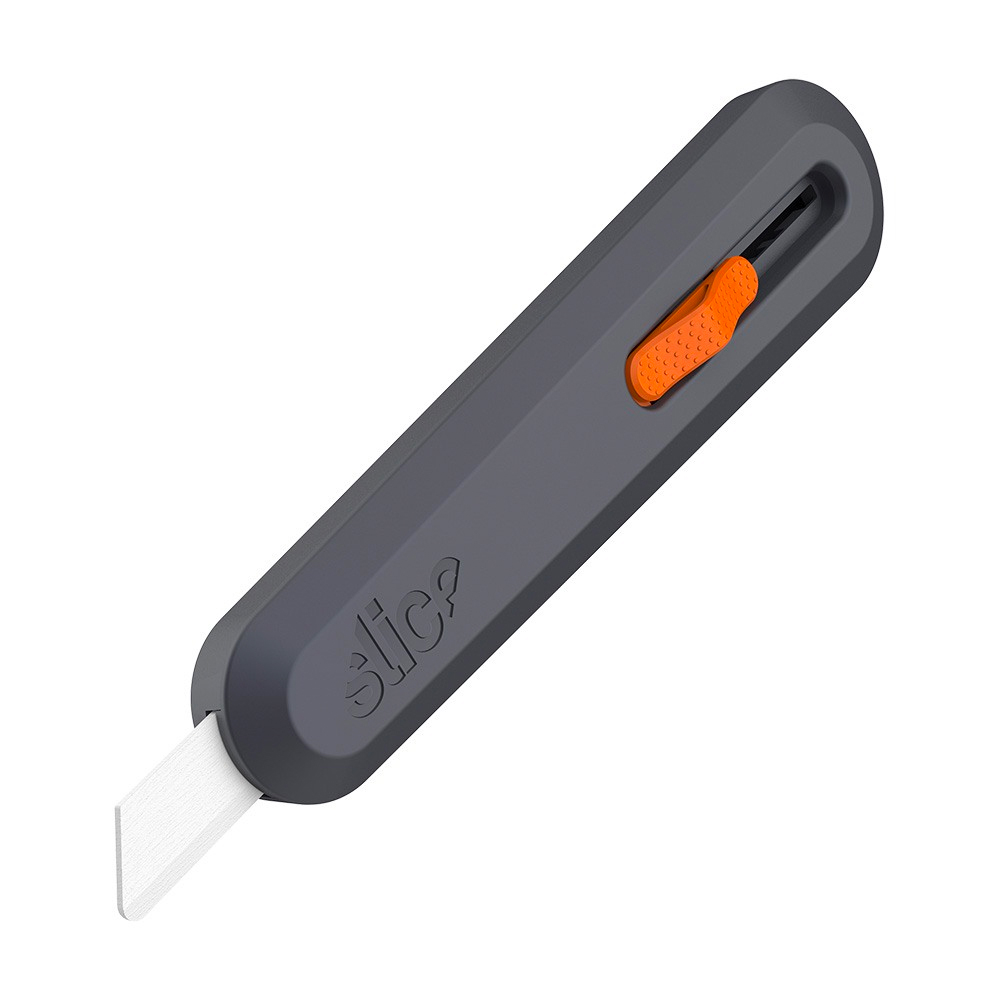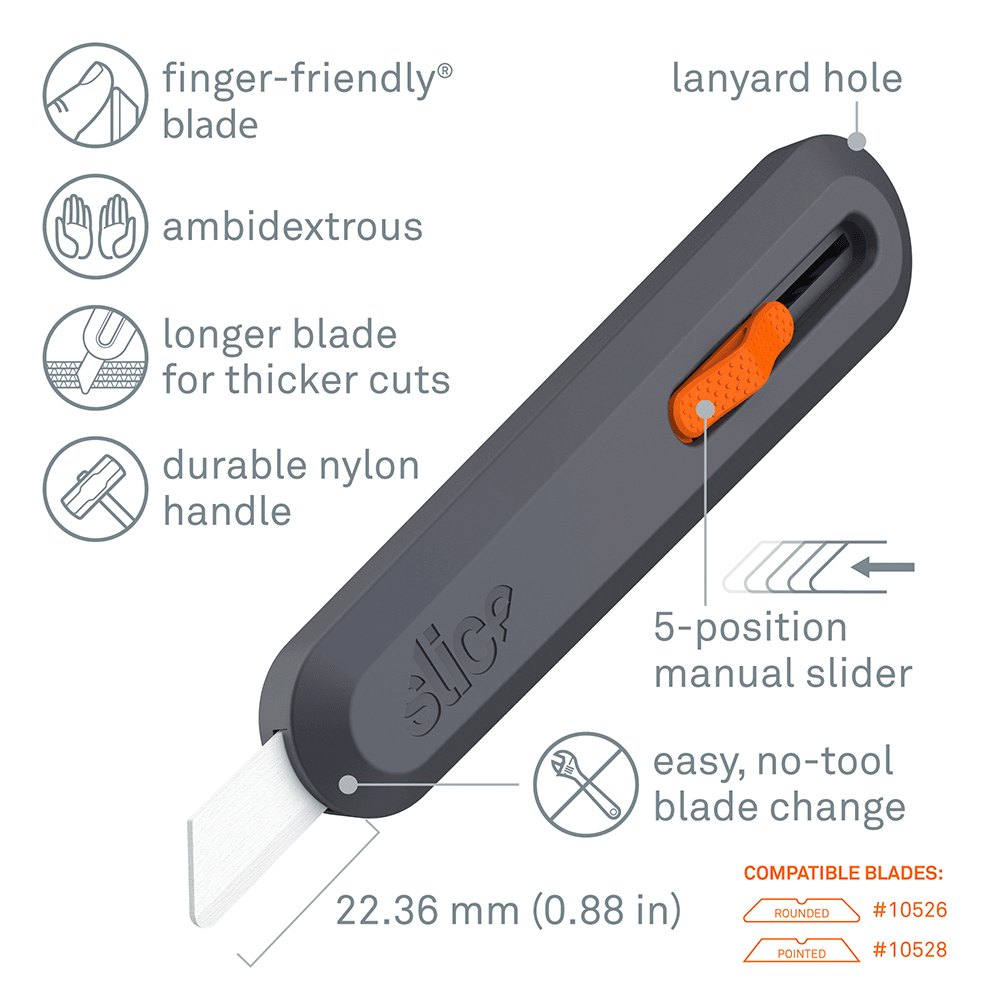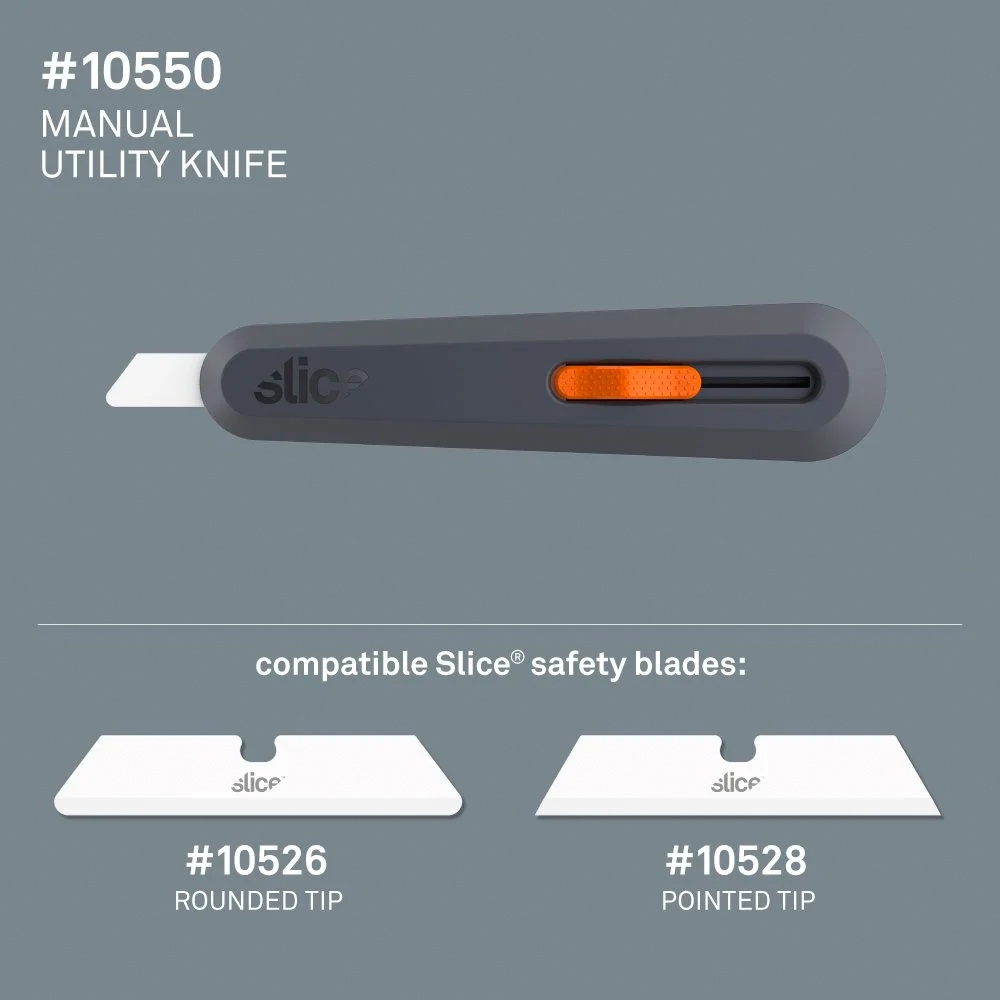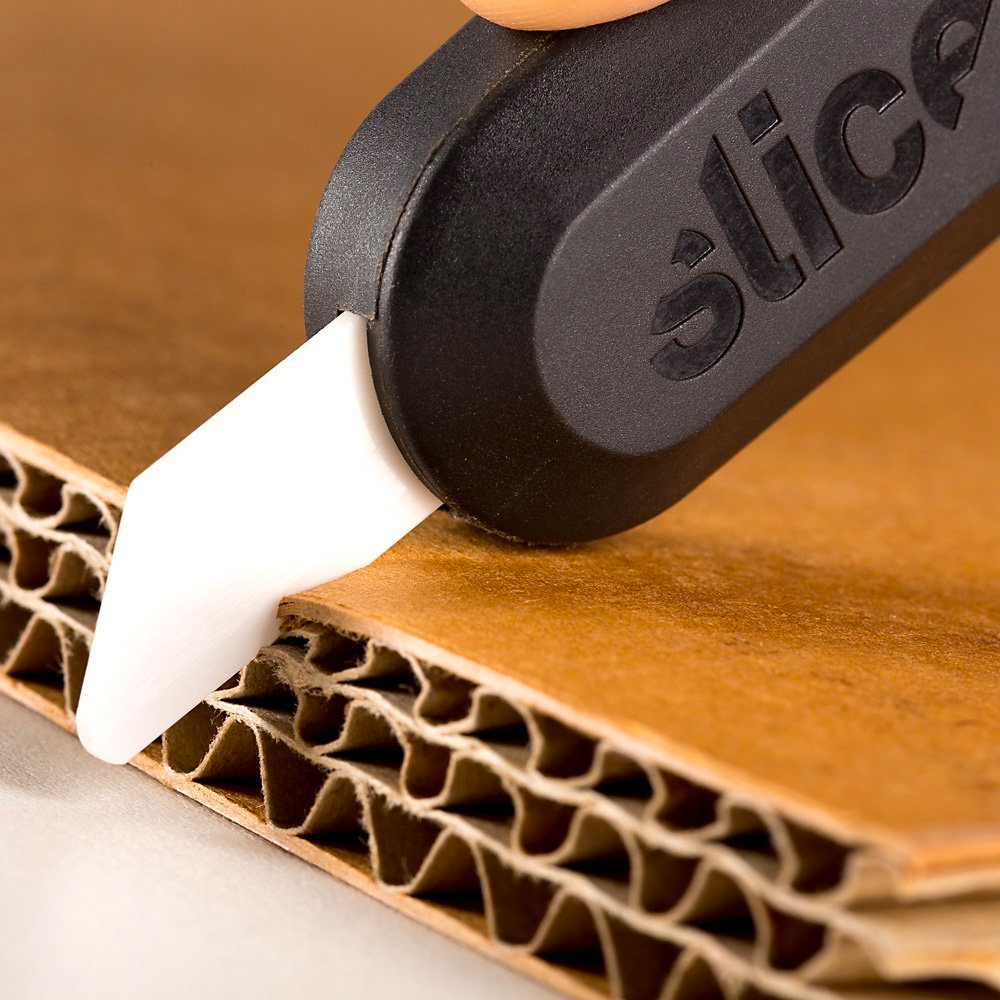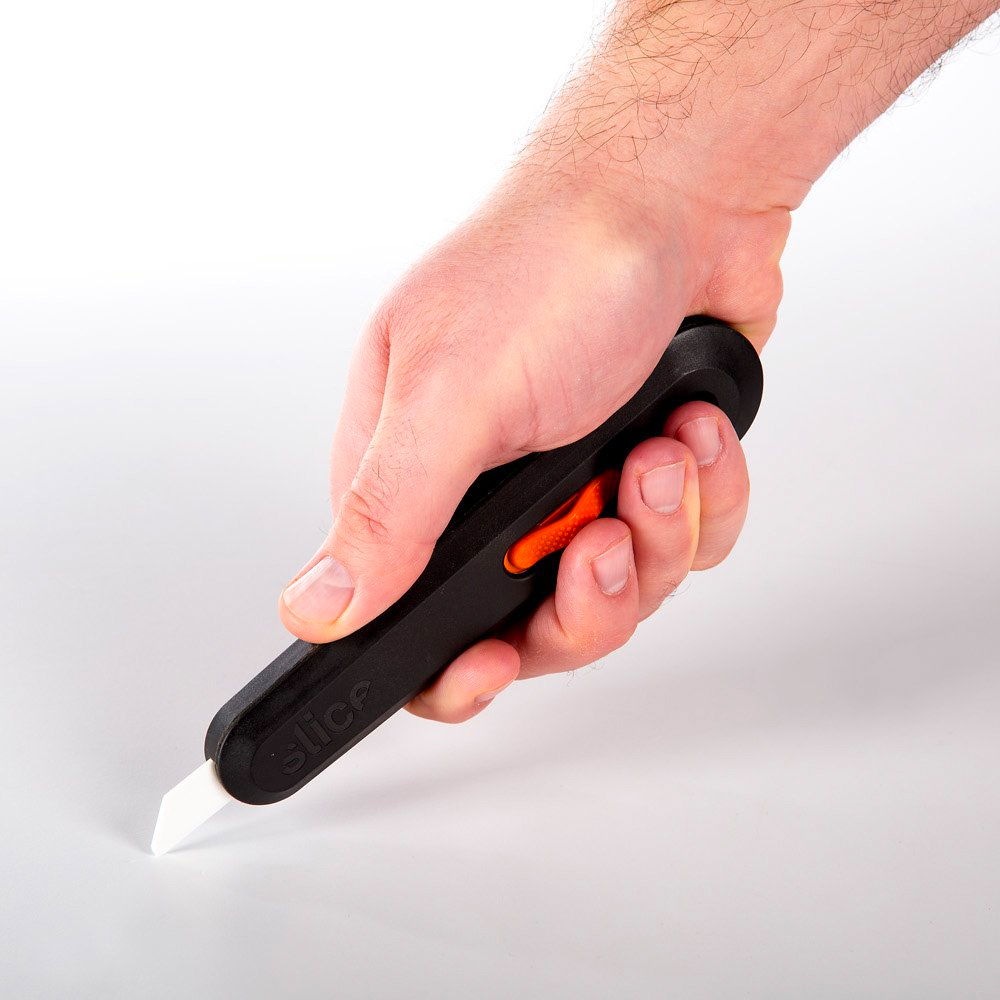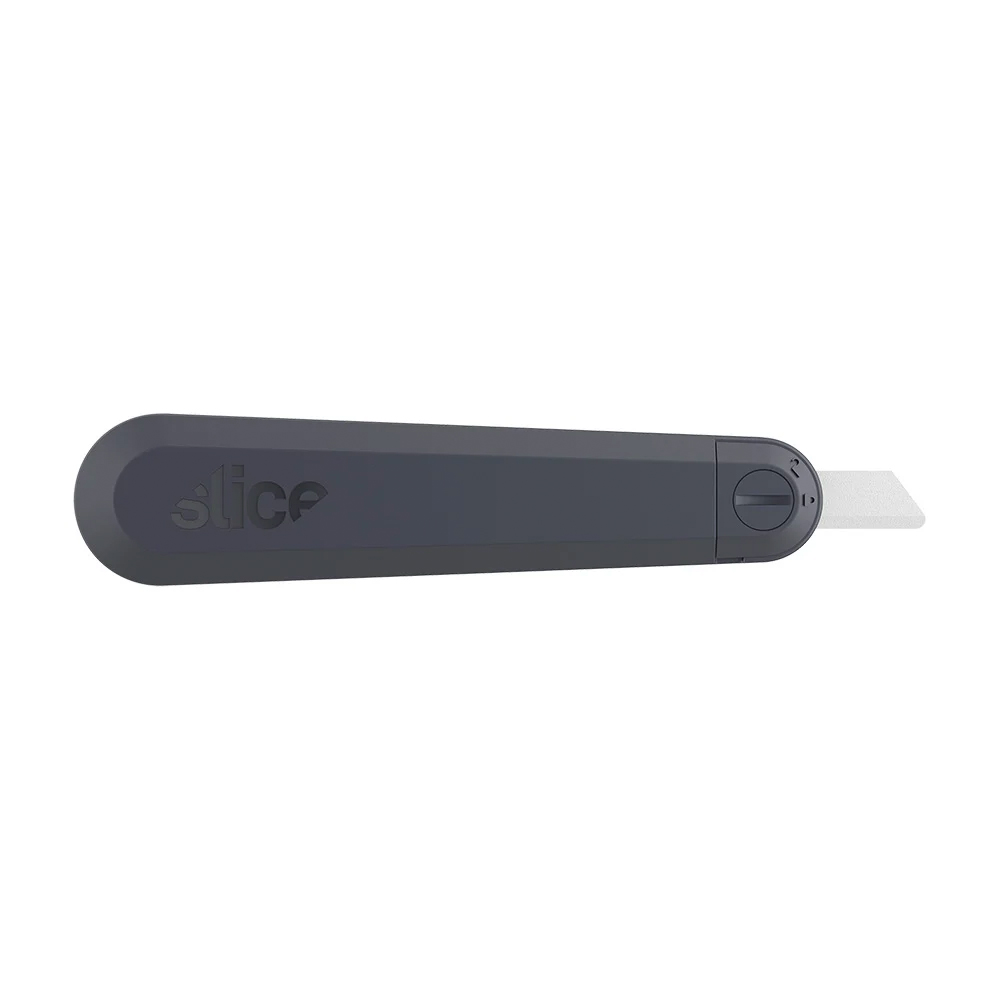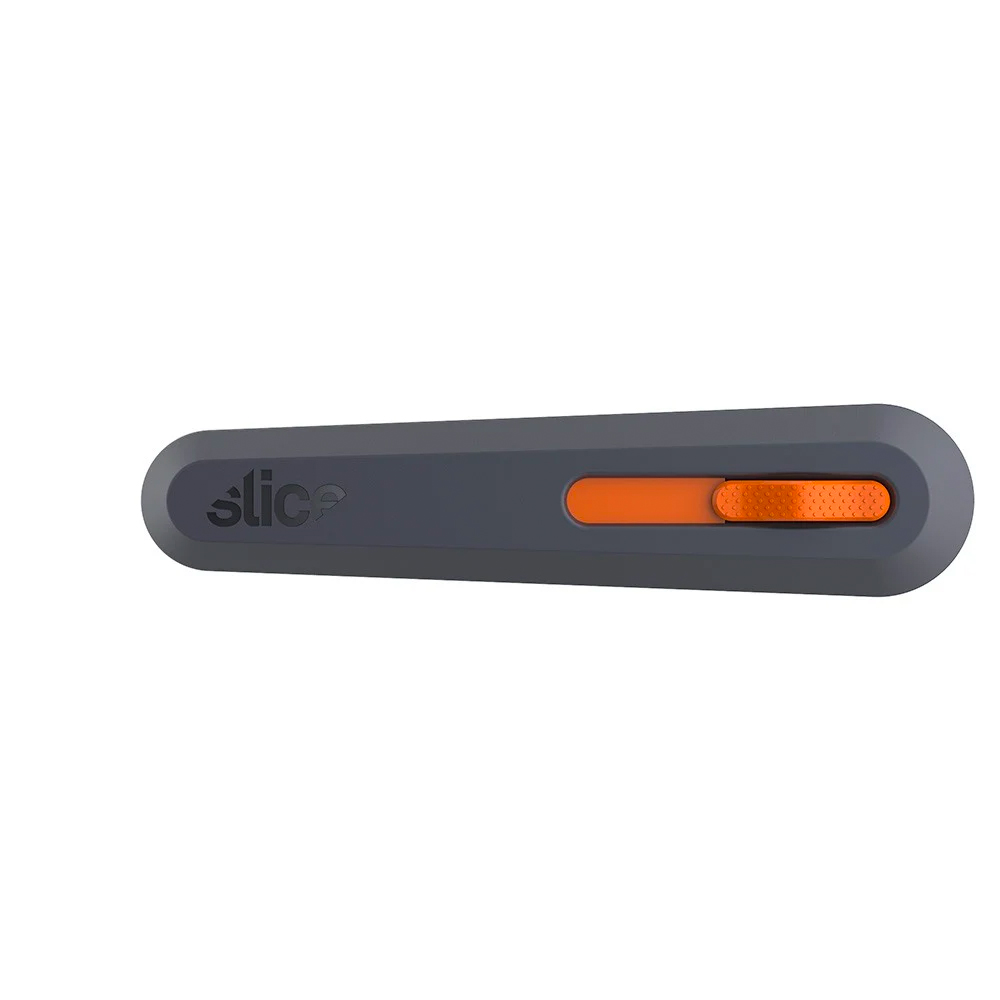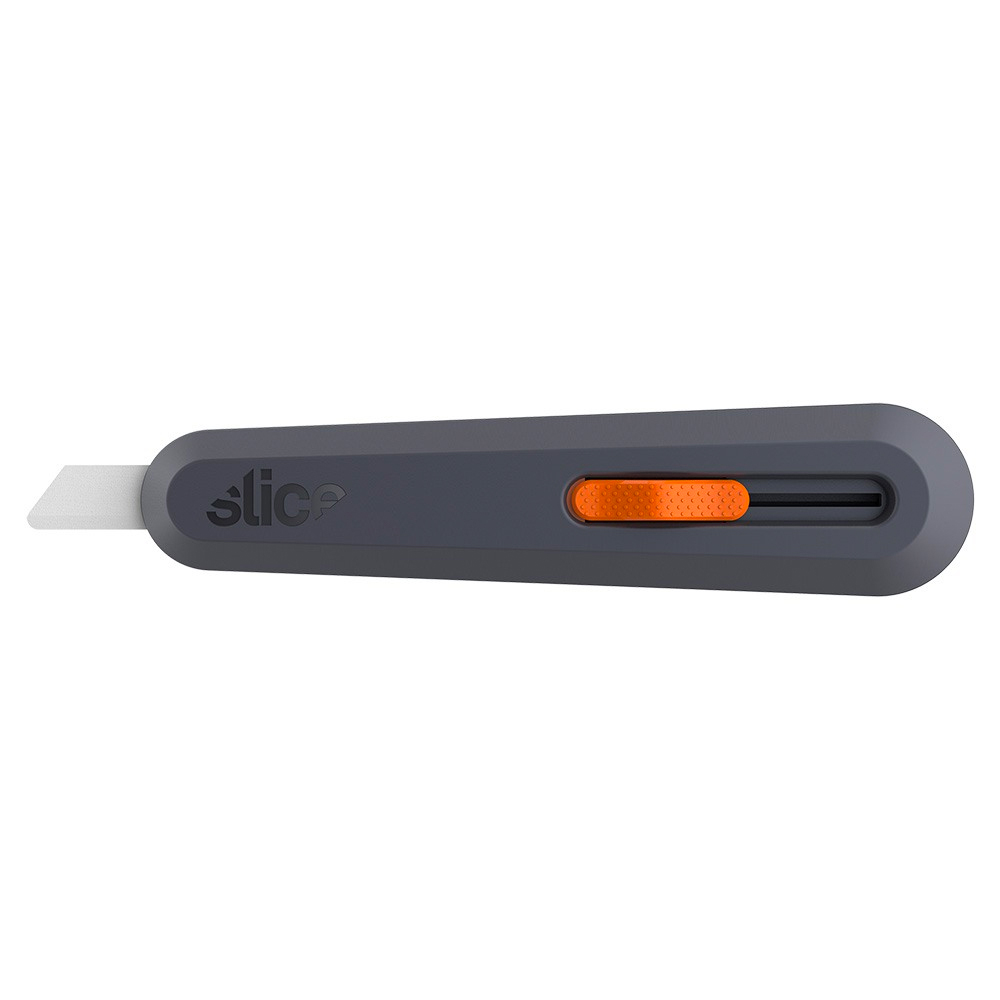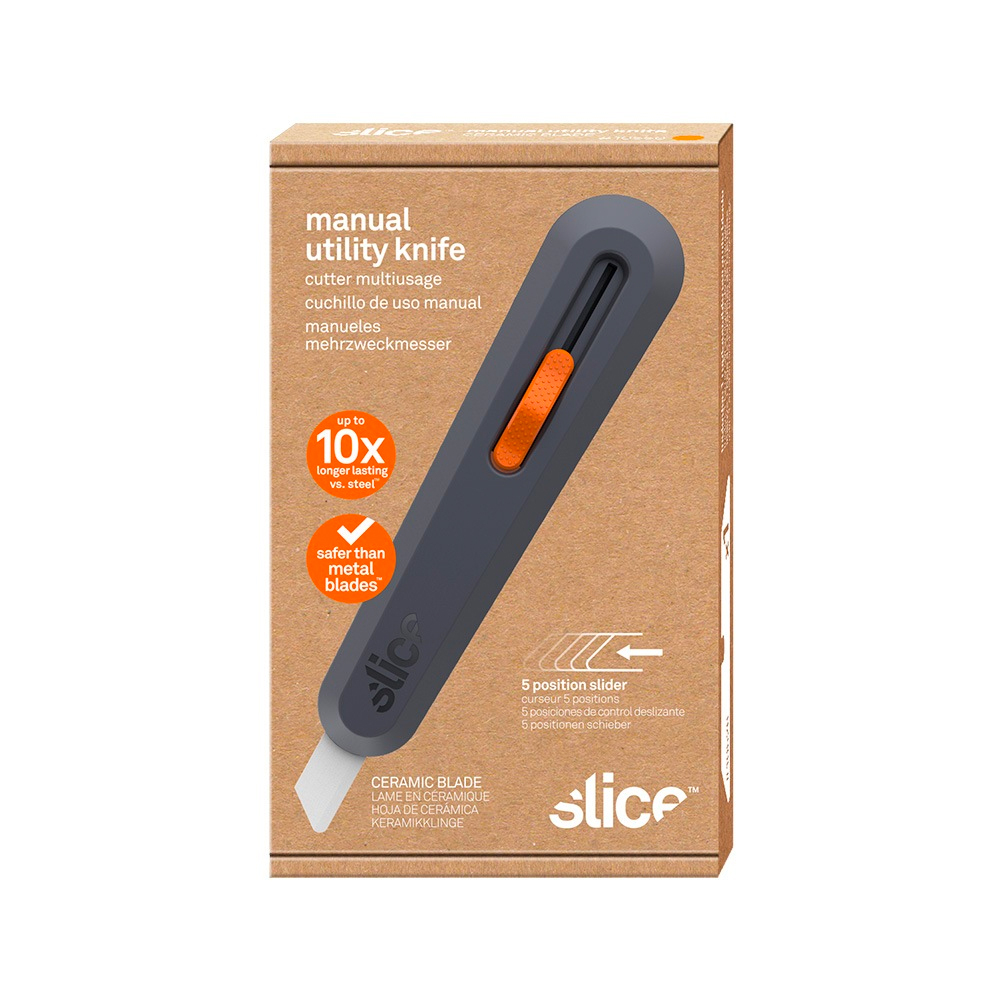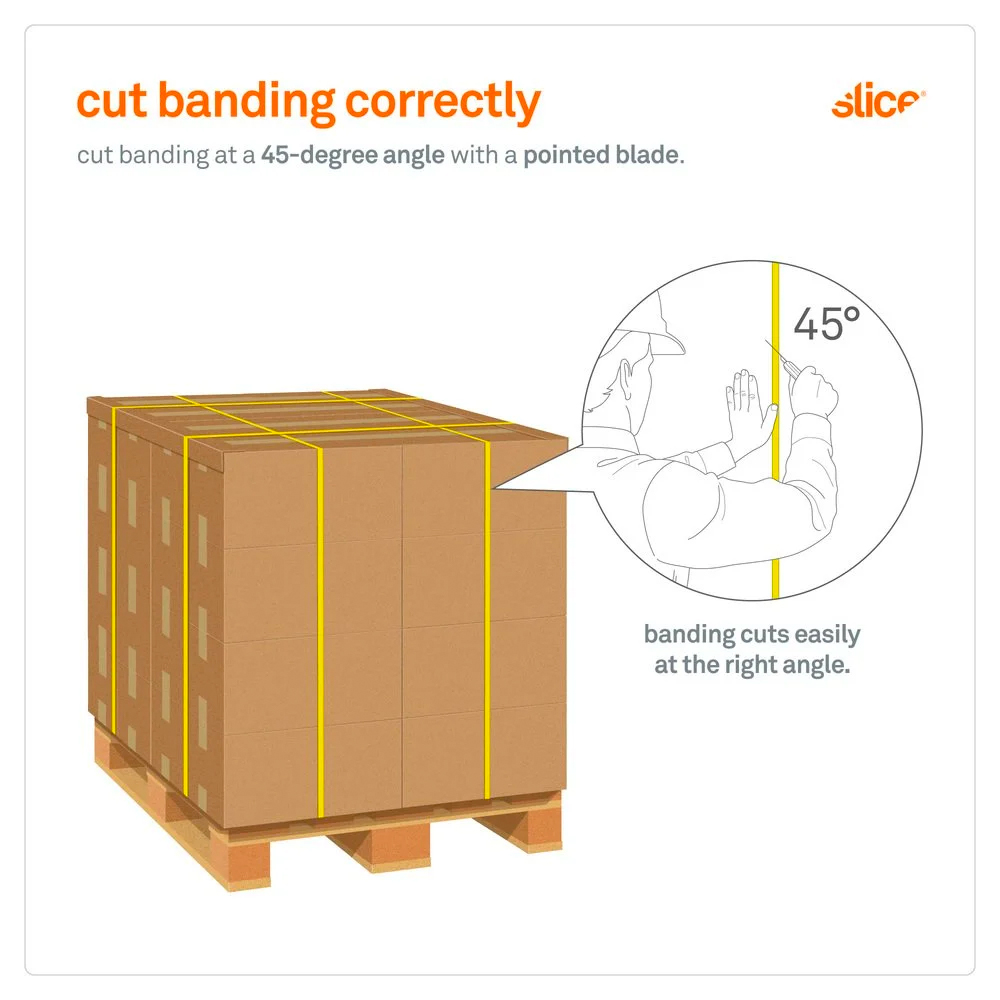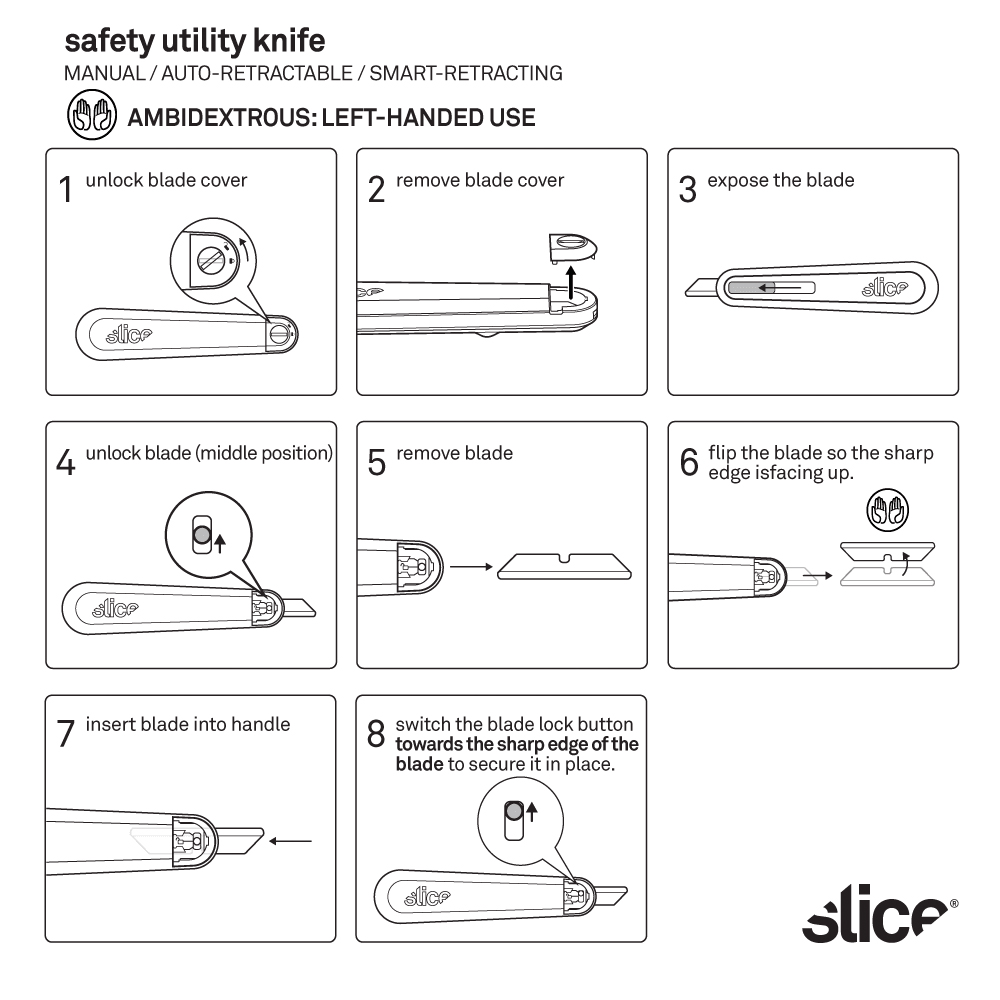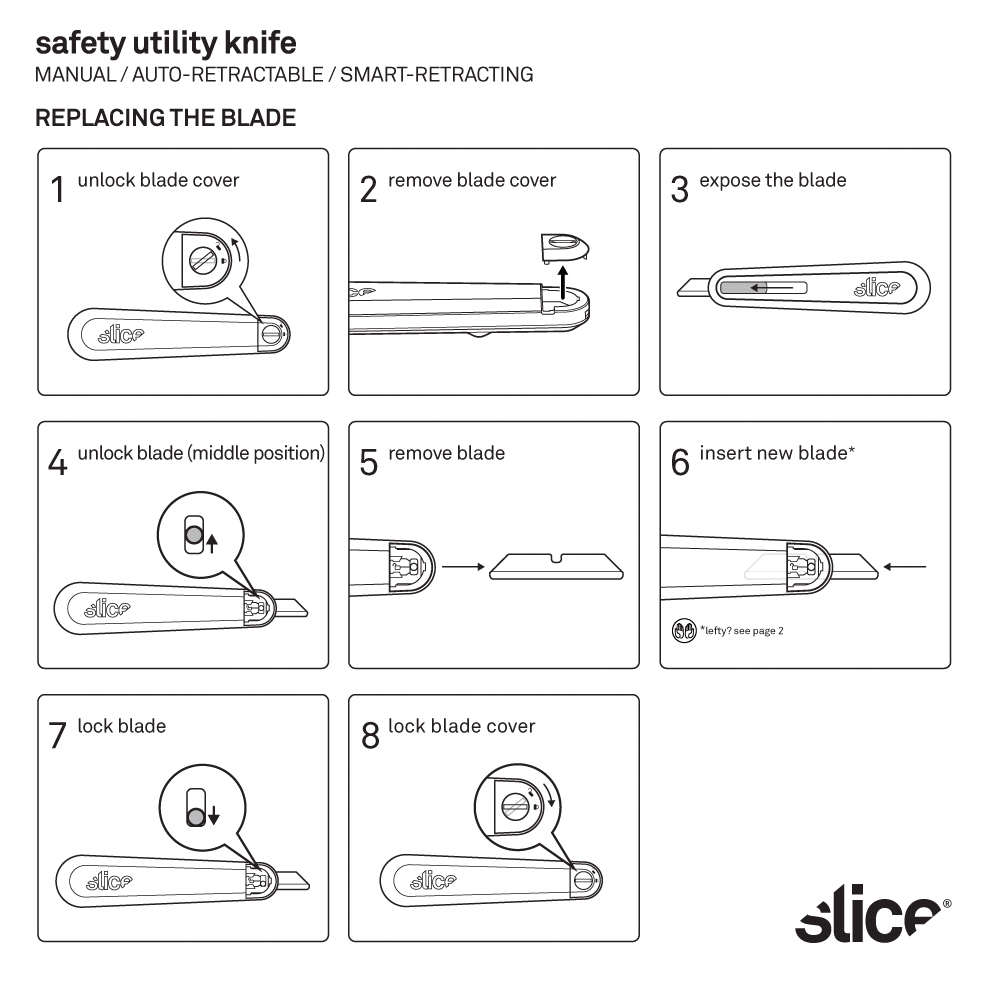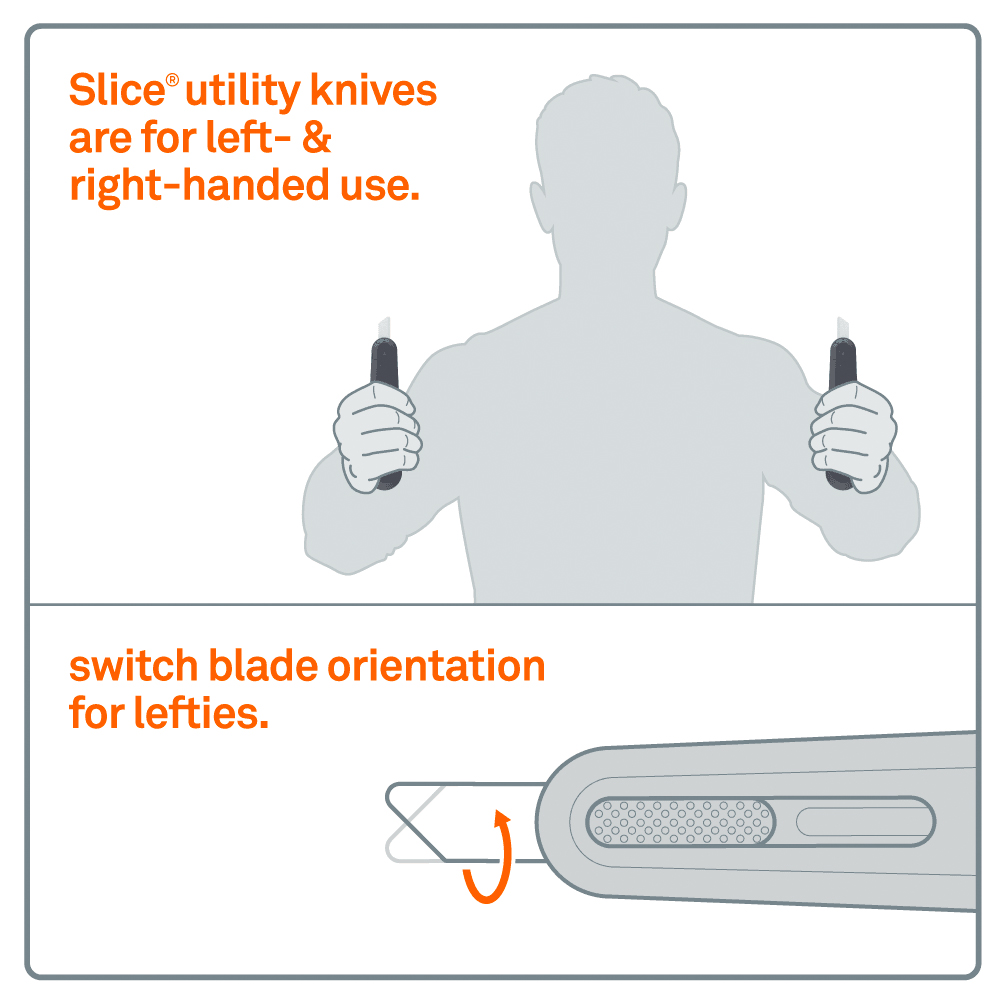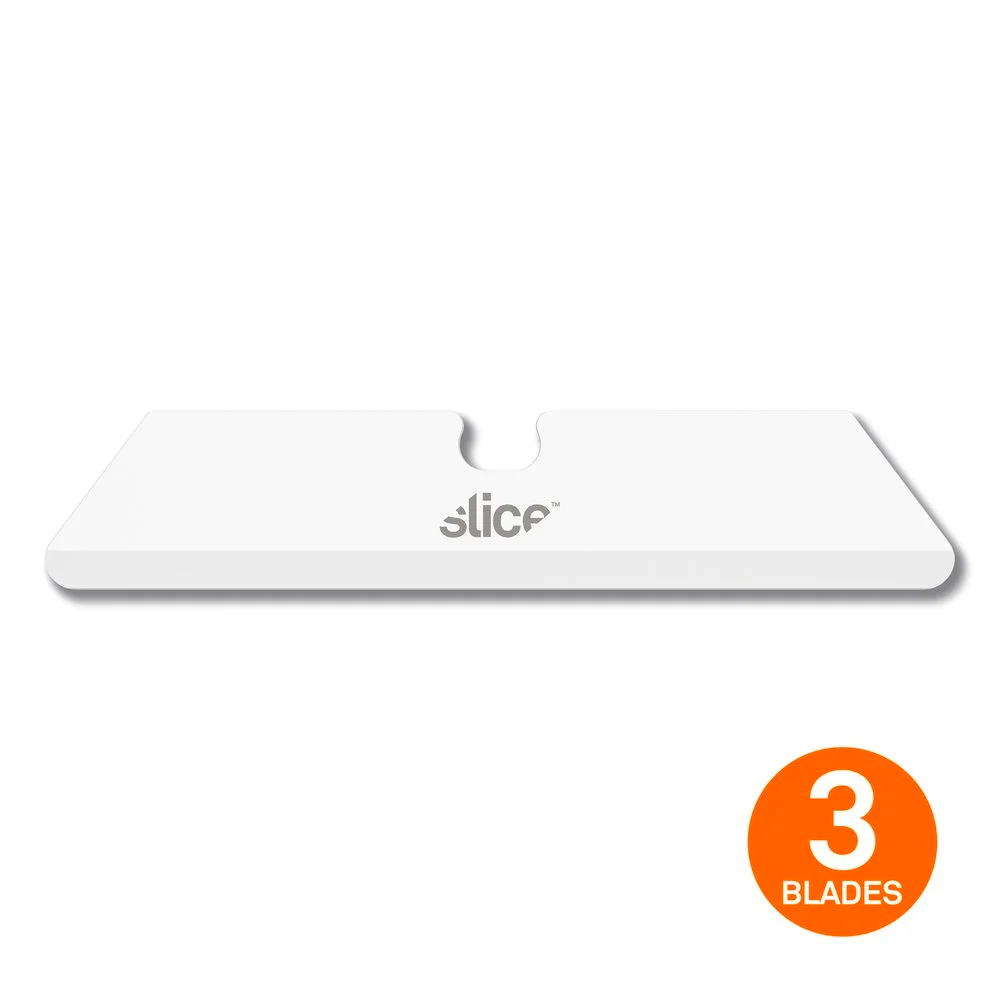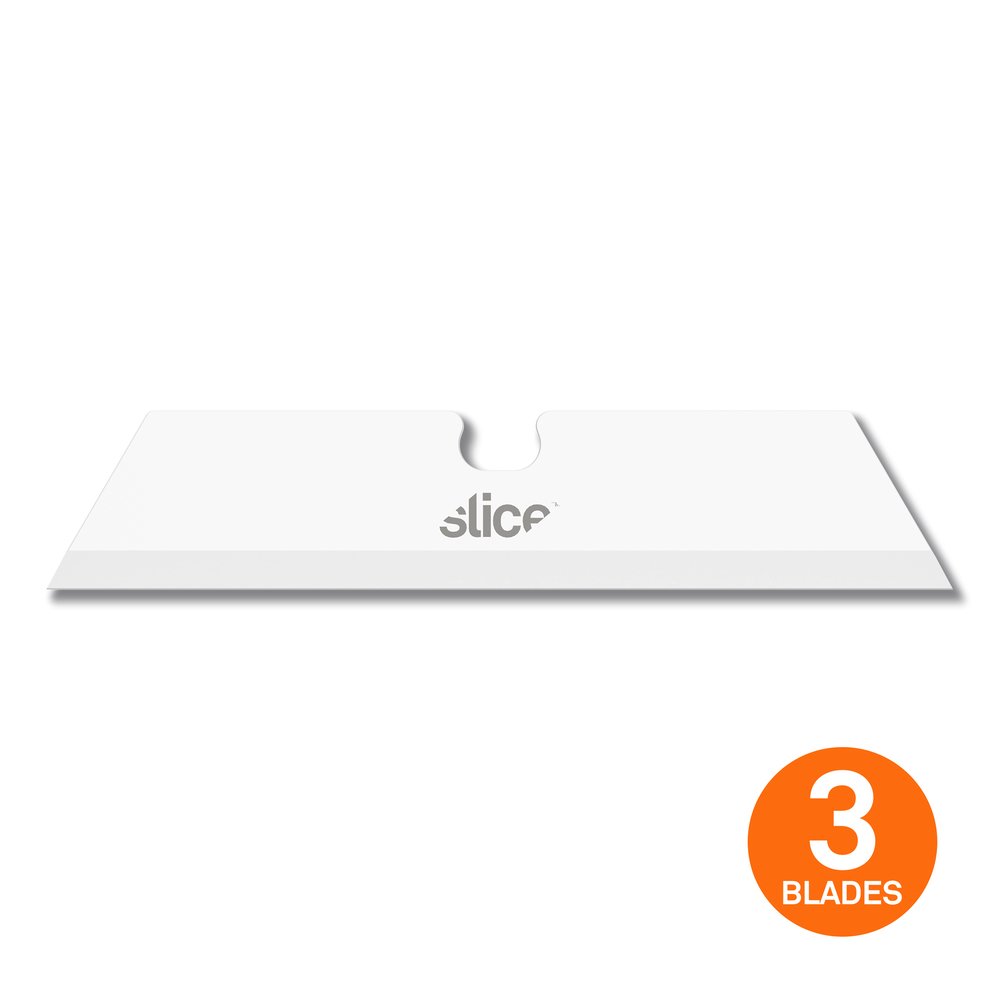Manual Utility Knife
DESCRIPTION
The Slice 10550 Manual Utility Knife is one of three handle styles available. It offers five blade positions, allowing the user to choose the correct blade depth for the job. Slice’s proprietary manufacturing process creates a finger-friendly ceramic blade edge. Like our other models, the manual safety utility knife features a durable glass-filled nylon handle and long-lasting replaceable blades. Slice ceramic blades are non-sparking, non-magnetic, and chemically inert. They never rust and are safe up to 1600 degrees Celsius
- Handle type: 5-position
- Durable glass-filled nylon handle
- Compatible blades: 10526, 10528
- Finger-friendly edge stays sharp 11x longer
- Reduces injuries, lowers costs
- Rust-free blade
- Non-sparking, non-conductive blade
- Ambidextrous design
- Lanyard hole keeps tool handy
- No-tool blade change
- Fewer blade changes = fewer injuries
- SKU #10550
VIDEOS
Slice 10550 Manual Utility Knife with Slice Ceramic Blade
Blade Replacement for Slice Utility Knives
PRODUCT SPECIFICATIONS
Cutting Depth: 22.2 mm
Weight: 66.0 g
Dimensions: L 153.83 x W 35.64 x H 21.18 mm
Materials: GFN, POM, carbon steel, zirconium oxide
MORE ABOUT OUR MANUAL SAFETY UTILITY KNIFE
What Is a Utility Knife Used For?
As the name suggests, the question of “what is a utility knife” comes down to its utility. Is the handle or blade designed for a narrow set of applications? Then chances are you’re looking at a specialized knife, such as a craft knife. If the knife is meant to handle whatever it comes in contact with, it’s more likely to be considered a utility knife.
This type of knife is used for a wide variety of tasks and materials, usually ones that require a sturdy, durable tool. Utility knife uses include scraping, piercing, or cutting, and materials include wire, carpeting, nylon straps, and metal sheets.
Is a Ceramic Utility Knife Safer?
Steel knives are typically sharpened far beyond what’s necessary because steel is soft, relatively speaking, and dulls very quickly. Extra sharpening is a workaround that extends the life of the blade but sacrifices safety. Advanced ceramics are much harder than steel and therefore don’t need to be sharpened to dangerous levels just to be effective. However, not all ceramic knives are equal. If a ceramic knife is sharpened to the unsafe levels of steel, it will be just as dangerous.
A Slice utility knife is a safety tool because our proprietary grind creates a finger-friendly edge that effectively cuts most materials but resists cutting skin. And because advanced ceramics are much harder than steel, Slice blades last, on average, 11.2 times longer than steel blades.
What Kind of Utility Knife Blades Does Slice Offer?
All our utility blades feature our proprietary finger-friendly edge. Slice utility blades are available in two options: pointed tip for a more effective piercing action and rounded tip for added protection against injuries.
To distinguish our different utility knife blade types, we look at how the blade is integrated with the handle. The Manual Utility Knife offers five fixed positions for blade, allowing the user to choose blade depth and keep the blade extended when it’s not in use. The Auto-Retractable Utility Knife has a slider button that must be engaged in order to extend the blade. This reduces injuries by ensuring that the blade is never left exposed when it’s not in use. Our Smart-Retracting Utility Knife has an added layer of safety. Its innovative technology senses when the blade loses contact with the cutting surface and automatically retracts the blade, even when the user is still holding the slider button.
How Can I Use a Utility Knife Safely?
Although Slice blades are safer than metal, they are still knives and it makes sense to treat them with the same general principles you’d apply in how to use a utility knife safely. These include cutting at an angle away from your body, ensuring that your environment is free of distractions, exposing only enough blade to do the job effectively, and keeping your other hand as far away from the cutting area as possible.

